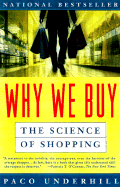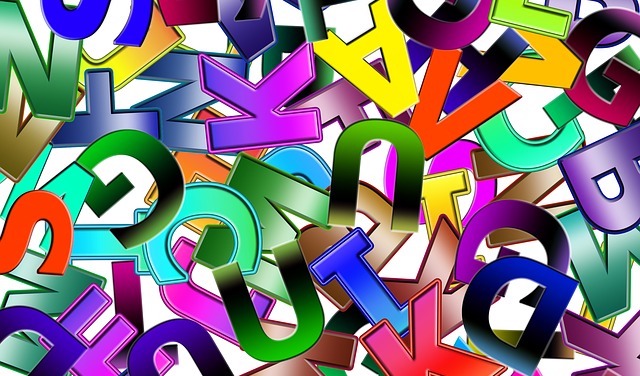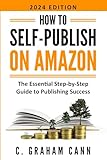Why We Buy
Three lessons for book publishers gleaned from Paco Underhill's fantastic book on the science of shopping.

 Why We Buy: The Science of Shopping by Paco Underhill |
 Paco Underhill is the founder and managing director of Envirosell, a behavioral market research and consulting company, and author of the international best-selling book, Why We Buy: The Science of Shopping. |
Paco Underhill's "Why We Buy: The Science of Shopping" was at the top of many reading lists a few years ago. Underhill, who runs a company that studies 'the science of shopping', describes some of the most common shopper behaviors and retail environment problems he's discovered in his studies.
I haven't met many publishers who have read the book, probably because the world of retail seems a few steps away from what we do. Although the information in this book is primarily of interest to those people on the front lines of retail, there is much that can be gleaned by publishers as well. I've outlined some of those insights here.
Covers and Merchandise Packaging
Underhill berates the publishing industry for the poor state of book cover design from a merchandising point of view. Book designers, he says, don't think of their work as packaging for a product, and the industry doesn't measure cover design the way other industries evaluate their packaging design.
This poses problems for the booksellers who need to try and sell that merchandise. Underhill offers an example of a book in a window display. Not only is a book cover too small to see at the distance (6 feet) most people will be viewing the display from, but the book itself has too many competing messages. Along with the title and an artistic illustration on the cover, he finds the sub-title, the author's name, the title of the author's last book and a sticker announcing it as an award winner. This is far too much for a customer to absorb in the 1.5 seconds it takes to walk past.
Although some might argue that having lots of information on the cover is best for the book browsing experience, keeping the shopper interested for longer periods of time, Underhill's research shows that the longer a shopper looks at a book, the less likely they are to buy it.
Add to the poor packaging the fact that bookstore shoppers aren't as motivated by the desire to buy as shoppers in other retail environments, and it seems a wonder any books get sold at all.
The ABCs of Book Shelves
Most bookstores stock books on shelves, but this, according to Underhill, is possibly the worst way to sell books. No one but the most motivated of shoppers will look at anything above eye level or below waist level. Shoppers hate bending over, and books on the bottom shelves are hard to see, making the bottom shelves in a bookstore (which usually means books by authors with last names near the end of the alphabet) one of "the worst Siberias in all of retailing."
What can publishers do to stay out of this bookstore wasteland? Unless one of your genre's bestselling authors is named Zuckerman, try to encourage Mr. Zyman to use a pseudonym.
Neatness Counts (But a Little Mess Never Hurt Anyone)
Did you know that a good looking display can actually discourage shopping?
When your author does booksignings, are her books immaculately stacked in symmetrical piles on the table? While shoppers appreciate good looking displays, they often don't want to 'undo' someone's hard work in creating the perfect pile, and so are reluctant to pick something up. Underhill suggests messing things up a bit. By making the display look as though it has already been messed up by previous shoppers, you can tell people that it's OK to pick up, browse and buy.
Read These Next
Approaching Book Publishers: The Importance of Creating a System
After your book has been written and edited, you may be ready to start approaching publishers. If you are like most first time book authors, there is a good chance that you will send your book manuscript to a large number of publishers and agents. Use these tips to best target and track your submissions
The A to Z of Self-Publishing
This excerpt from "The Economical Guide to Self-Publishing: How to Produce and Market Your Book on a Budget" takes you through self-publishing from A to Z
Will E-Books Topple Publishers as We Know Them?
Are the major publishing houses we love and revile about to come tumbling down, undermined by a million e-bookers? Yes, says Smashwords’ founder Mark Coker, there’s a revolution afoot. No, says Berrett-Koehler’s David Marshall, the new publishing houses will just be different and better. The odd man out, publishing consultant Peter Beren, thinks the traditional publishers will not only survive, they will probably just absorb the current e-book craze and crazies.







 Self-Publishing For Dummies (For Dummies: Learning Made Easy)
Self-Publishing For Dummies (For Dummies: Learning Made Easy) How to Self-Publish Your Book: A Complete Guide to Writing, Editing, Marketing & Selling Your Own Book
How to Self-Publish Your Book: A Complete Guide to Writing, Editing, Marketing & Selling Your Own Book Write. Publish. Repeat. (The No-Luck-Required Guide to Self-Publishing Success)
Write. Publish. Repeat. (The No-Luck-Required Guide to Self-Publishing Success) Self Publishing To Amazon KDP In 2023 - A Beginners Guide To Selling E-books, Audiobooks & Paperbacks On Amazon, Audible & Beyond
Self Publishing To Amazon KDP In 2023 - A Beginners Guide To Selling E-books, Audiobooks & Paperbacks On Amazon, Audible & Beyond How to Self-Publish on Amazon: The Essential Step-by-Step Guide to Publishing Success
How to Self-Publish on Amazon: The Essential Step-by-Step Guide to Publishing Success Self Publishing To Amazon KDP In 2024 - A Beginners Guide To Selling E-books, Audiobooks & Paperbacks On Amazon, Audible & Beyond
Self Publishing To Amazon KDP In 2024 - A Beginners Guide To Selling E-books, Audiobooks & Paperbacks On Amazon, Audible & Beyond Self-Publisher's Legal Handbook: Updated Guide to Protecting Your Rights and Wallet
Self-Publisher's Legal Handbook: Updated Guide to Protecting Your Rights and Wallet Self-Publishing: The Secret Guide To Becoming A Best Seller (Self Publishing Disruption Book 2)
Self-Publishing: The Secret Guide To Becoming A Best Seller (Self Publishing Disruption Book 2) 14 Steps to Self-Publishing a Book
14 Steps to Self-Publishing a Book AMAZON KINDLE DIRECT PUBLISHING COMPLETE GUIDE: Account Opening, Formatting, Cover Design, Publishing, Promotion/Marketing, Get US Payoneer Bank Account to Receive Your Royalties
AMAZON KINDLE DIRECT PUBLISHING COMPLETE GUIDE: Account Opening, Formatting, Cover Design, Publishing, Promotion/Marketing, Get US Payoneer Bank Account to Receive Your Royalties